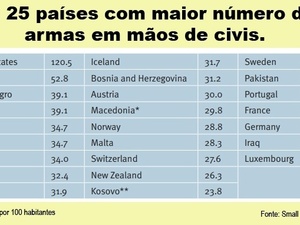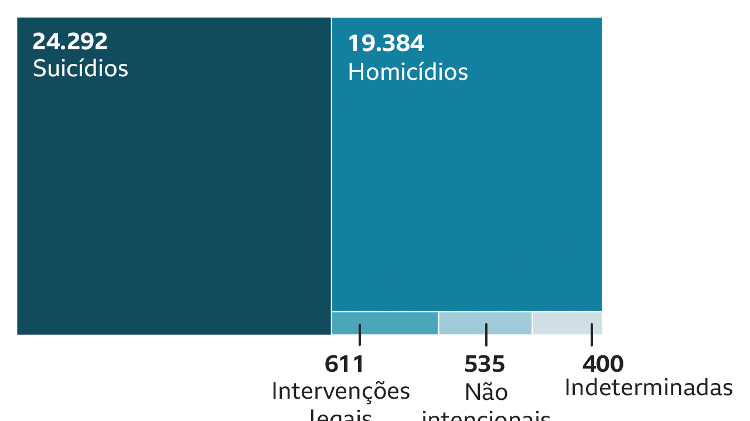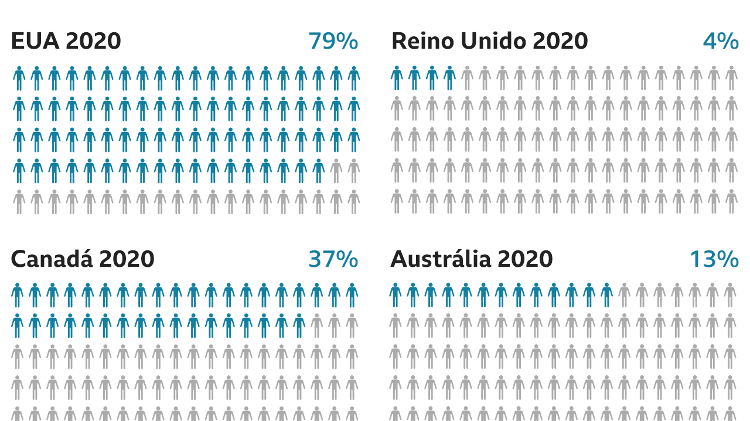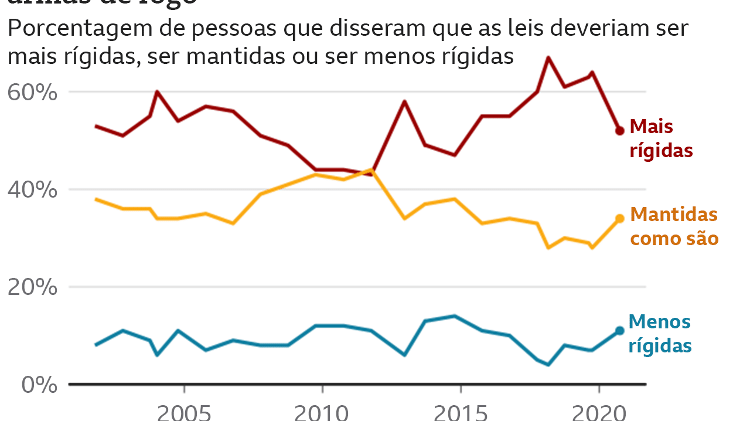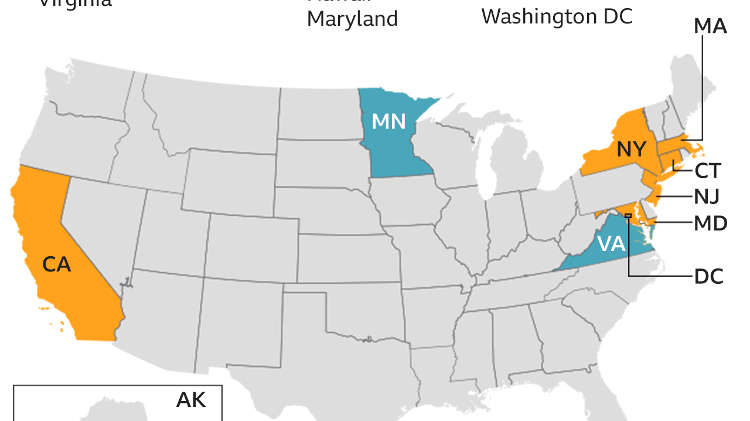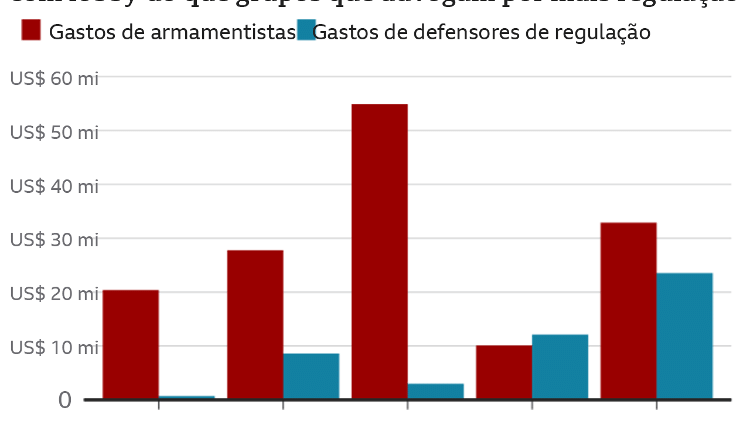1.5 million gun deaths in the US between 1968 and 2017? The number is more than any American soldier killed in the country’s wars since the War of Independence in 1775.
More than 50 years ago, President Lyndon Johnson’s administration declared that “firearms are the main means of death” in the United States, and that this is the result of an indulgence in “our firearms culture.”
Around 90 million guns were circulating in the country at the time. There are many more guns and more deaths today.
On Tuesday (24/5), another attack on a school in Uvalde, Texas, killed 21 people (19 children and 2 adults). The American, who entered the school with a gun and started shooting, was an 18-year-old boy.
1.5 million gun deaths in the US between 1968 and 2017? The number is more than any American soldier killed in the country’s wars since the War of Independence in 1775.
In 2020 alone, more than 45,000 Americans died from gunshot wounds through murder or suicide, more than in any other year on record. The figure represents a 25% increase over the previous five years and a 43% increase over 2010.
But the issue is highly polarized, with advocates of greater gun control on one side and gun groups on the other.
See what we know about gun culture in the United States and its impact in seven charts.
Data shows that gun ownership has increased significantly in the United States in recent years. A study published in February in the Annals of Internal Medicine found that 7.5 million American adults – just under 3% of the population – owned new guns between January 2019 and April 2021.
This left 11 million people, including 5 million children, exposed to firearms in their homes. About half of new gun owners at the time were women, 40% were black or Hispanic.
The rate of 120.5 firearms per 100 people in the USA, which was 88 per 100 in 2011, is much higher than that of any other country in the world.
A separate study published by the American Academy of Pediatrics in 2021 linked increased gun ownership during the pandemic with higher rates of gunshot wounds among and from children.
Deaths from firearms in the USA
How are US gun deaths split?
According to the U.S. Centers for Disease Control and Prevention (CDC), a total of 45,222 people died from gun-related injuries from all causes in 2020, the last year for which all data are available.
“Legal interventions” are cases of justified death caused by security guards or, in some cases, by civilians (such as in self-defense).
And while shootings and shootings in public places often garnered media attention, 54% of the total – about 24,300 deaths – were suicides.
A 2016 study published in the American Journal of Public Health found a strong association between higher gun ownership levels in a state and higher firearm suicide rates for men and women.
Proponents of stricter gun laws in the United States often refer to this statistic as they force legislators to devote more resources to mental health and less to easing gun restrictions.
International comparison of firearms related deaths to total homicides
How do the US murders compare to other countries?
According to CDC data, 43% of deaths in 2020 (19,384 people in total) were homicides. The figure represents a 34% increase over 2019 and a 75% increase over the previous decade. According to the data, approximately 53 people are killed by firearms every day in the United States.
The data also show that the vast majority of homicides, 79 percent, were committed with firearms. This is a significantly higher rate of homicides than in Canada, Australia, England, Wales and many other countries.
Worst firearm attacks in the US since 1991
Are Firearm Attacks Getting More Deadly?
Deaths from gunshots to schools and other establishments are more difficult to track.
For more than a decade, the FBI has been tracking “active sniper incidents” in which “a person is actively involved in killing or attempting to kill people in a populated area.” According to the FBI, 345 “active shooter incidents” occurred in the United States between 2000 and 2020, resulting in more than 1,024 deaths and 1,828 injuries.
More than 50 people were killed and 500 injured in the deadliest attack of its kind in Las Vegas in 2017. However, the vast majority of shootings kill less than 30 people.
Americans’ views on firearms regulation
Who supports gun control?
Despite widespread and vocal public anger – often in the wake of gun violence – American support for tougher gun laws in 2020 fell to its lowest level since 2014, according to a Gallup poll.
Only 52% of Americans surveyed said they wanted stricter gun laws, while 35% said they should stay the same. 11 percent of respondents said the law should be “less strict”.
The subject is also extremely partisan and extremely polarized. In the same Gallup poll, “Democrats were almost unanimous in their support of tougher gun laws,” with nearly 91 percent in favor of tougher gun laws.
Only 24% of Republicans and 45% of independent voters agree with the same statement.
Some states have taken steps to ban or strictly regulate the possession of semi-automatic weapons. Laws vary from state to state, but California, for example, has banned possession of these guns with limited exceptions.
Some controls are widely supported by people in political divisions – for example, restrictions regulating the sale of guns on mentally compromised or “watch” lists.
Who opposes gun control?
Despite years of financial troubles and internal strife, the National Rifle Association (NRA) remains the most powerful gun lobby in the United States, with a substantial budget to influence members of Congress over gun policy.
In January, the NRA filed for bankruptcy as part of a fraud case against some of its own top employees. Even after the move, he pledged to continue “to confront anti-Second Amendment activities, promote firearms safety and education, and advance public programs in the United States.”
Over the past few election cycles, he and other organizations have consistently spent more money on pro-gun messages than their rivals in the gun control lobby.
Some states have gone so far as to largely remove restrictions on who can carry a gun. For example, in June 2021, Texas Governor Greg Abbott signed an “Unauthorized Transport Act.”
States with restrictions on semi-automatic weapons
In recent years, gun groups have spent more on lobbying than groups advocating greater regulation.
Did you know that the BBC is also on Telegram? subscribe to the channel.
Have you watched our new videos on YouTube?? Subscribe to our channel!
https://www.youtube.com/watch?v=rAJm-L5sHiw
https://www.youtube.com/watch?v=G_klf79mwuA
https://www.youtube.com/watch?v=0qKw6Tp6mhk
source: Noticias
